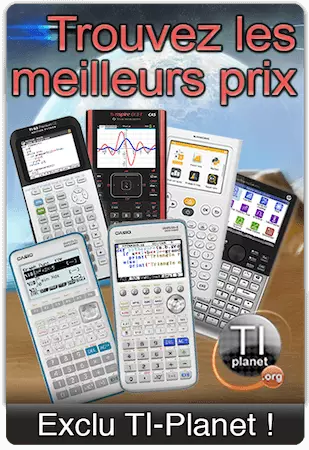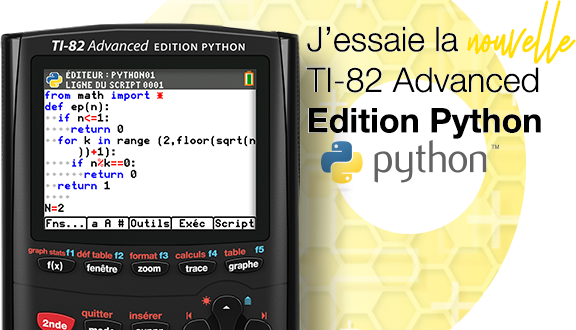notes
DownloadTélécharger
Actions
Vote :
ScreenshotAperçu

Informations
Catégorie :Category: nCreator TI-Nspire
Auteur Author: kalistak
Type : Classeur 3.0.1
Page(s) : 1
Taille Size: 4.99 Ko KB
Mis en ligne Uploaded: 28/10/2024 - 04:13:14
Uploadeur Uploader: kalistak (Profil)
Téléchargements Downloads: 1
Visibilité Visibility: Archive publique
Shortlink : http://ti-pla.net/a4277143
Type : Classeur 3.0.1
Page(s) : 1
Taille Size: 4.99 Ko KB
Mis en ligne Uploaded: 28/10/2024 - 04:13:14
Uploadeur Uploader: kalistak (Profil)
Téléchargements Downloads: 1
Visibilité Visibility: Archive publique
Shortlink : http://ti-pla.net/a4277143
Description
Fichier Nspire généré sur TI-Planet.org.
Compatible OS 3.0 et ultérieurs.
<<
Formulas No. of molecules = n [no. of moles] x A [Avogadro's Constant] No. of moles (n) = Mass (m)/ Molar Mass (Mr) No. of Atoms = No. of Molecules [n x A] x Atomicity No. of moles (n) = Volume (dm3) / Molar volume (STP or RTP) % yield = [Experimental yield/ Theoretical Yield] x 100 C [molarity] = no. of moles [n]/ Volume of concentration [v] Ideal Gas Law - PV = nRT Volume/concentration constant - C1V1 = C2V2 How to Find the Limiting Reagent Step 1: Write down the whole equation Step 2: Balance the entire equation Step 3: Using the balanced equation, determine the coefficient ratio of the reactants Step 4: Write down the ratios of the values given in the question Step 5: Convert the amounts to moles Step 6: divide the values (mole ratio / coefficient ratio) Ans: The smallest value is the limiting reagent Ideal Gas Law PV = nRT ; where P - Pressure (Pa) V = Volume (m 3 ) T - Temperature (K) *Take celsius value and + 273 R - Constant (8.31 JK/mol) n - no. of moles (mol) Molar Volume Values STP - Standard Temperature and Pressure RTP - Room Temperature and Pressure Temp.: 0 degrees Celsius Temp.: 20 degrees Celsius Pressure: 1 atm Pressure = approx. 1atm Volume: 22.7 dm3 Volume: 24 dm3 Ideal Gas vs. Real Gas Ideal Gas Real Gas Obeys all gas laws All properties change No forces of attraction Forces of attraction Collide in straight lines Collision in random motion No mass or volume High Temperature Low Temperature Low Pressure High Pressure High Volume Low Volume Finding Percentage Yield of a Reaction Note: % yield always applies on PRODUCTS 1: In any situation, first determine which of the products is the limiting reagent 2: Using the compound which is limiting, form a ration such that [limiting reactant : product] 3: Under the ratio, write the coefficient ratio of reactant : product 4: Add the molar mass OF 1 MOLE 5: Multiply the Molar mass with the number of moles = mass value 6: Cross multiply to find the THEORETICAL YIELD 7: Use the mass of the product given in the question - (EXPERIMENTAL YIELD) 8: Substitute in the formula: [Experimental Yield/ Theoretical Yield] x 100 to find % yield Convert cm³ to dm³: Divide by 1000 Convert kJ to J: Multiply by 1000 Periodic Trends Cheat Sheet Atomic Radius (size of an atom) Across a Period (Left to Right) : Decreases. More protons pull electrons closer to the nucleus. Down a Group : Increases. More electron shells are added, increasing the distance from the nucleus. Ionization Energy (energy to remove an electron) Across a Period : Increases. Atoms are smaller and hold electrons more tightly. Down a Group : Decreases. Electrons are farther from the nucleus and are easier to remove. Electronegativity (tendency to attract electrons in a bond) Across a Period : Increases. Atoms have a stronger attraction to fill their outer shell. Down a Group : Decreases. Larger atoms have a weaker pull on bonding electrons. Electron Affinity (energy change when an electron is added) Across a Period : Generally becomes more negative (releases more energy). Atoms more readily accept electrons to achieve a stable octet. Down a Group : Becomes less negative. Larger atoms have a reduced attraction for additional electrons. Metallic Character (likelihood of losing electrons) Across a Period : Decreases. Non-metals (right side) are less likely to lose electrons. Down a Group : Increases. Metals (left side and lower in a group) lose electrons more easily. Made with nCreator - tiplanet.org
>>
Compatible OS 3.0 et ultérieurs.
<<
Formulas No. of molecules = n [no. of moles] x A [Avogadro's Constant] No. of moles (n) = Mass (m)/ Molar Mass (Mr) No. of Atoms = No. of Molecules [n x A] x Atomicity No. of moles (n) = Volume (dm3) / Molar volume (STP or RTP) % yield = [Experimental yield/ Theoretical Yield] x 100 C [molarity] = no. of moles [n]/ Volume of concentration [v] Ideal Gas Law - PV = nRT Volume/concentration constant - C1V1 = C2V2 How to Find the Limiting Reagent Step 1: Write down the whole equation Step 2: Balance the entire equation Step 3: Using the balanced equation, determine the coefficient ratio of the reactants Step 4: Write down the ratios of the values given in the question Step 5: Convert the amounts to moles Step 6: divide the values (mole ratio / coefficient ratio) Ans: The smallest value is the limiting reagent Ideal Gas Law PV = nRT ; where P - Pressure (Pa) V = Volume (m 3 ) T - Temperature (K) *Take celsius value and + 273 R - Constant (8.31 JK/mol) n - no. of moles (mol) Molar Volume Values STP - Standard Temperature and Pressure RTP - Room Temperature and Pressure Temp.: 0 degrees Celsius Temp.: 20 degrees Celsius Pressure: 1 atm Pressure = approx. 1atm Volume: 22.7 dm3 Volume: 24 dm3 Ideal Gas vs. Real Gas Ideal Gas Real Gas Obeys all gas laws All properties change No forces of attraction Forces of attraction Collide in straight lines Collision in random motion No mass or volume High Temperature Low Temperature Low Pressure High Pressure High Volume Low Volume Finding Percentage Yield of a Reaction Note: % yield always applies on PRODUCTS 1: In any situation, first determine which of the products is the limiting reagent 2: Using the compound which is limiting, form a ration such that [limiting reactant : product] 3: Under the ratio, write the coefficient ratio of reactant : product 4: Add the molar mass OF 1 MOLE 5: Multiply the Molar mass with the number of moles = mass value 6: Cross multiply to find the THEORETICAL YIELD 7: Use the mass of the product given in the question - (EXPERIMENTAL YIELD) 8: Substitute in the formula: [Experimental Yield/ Theoretical Yield] x 100 to find % yield Convert cm³ to dm³: Divide by 1000 Convert kJ to J: Multiply by 1000 Periodic Trends Cheat Sheet Atomic Radius (size of an atom) Across a Period (Left to Right) : Decreases. More protons pull electrons closer to the nucleus. Down a Group : Increases. More electron shells are added, increasing the distance from the nucleus. Ionization Energy (energy to remove an electron) Across a Period : Increases. Atoms are smaller and hold electrons more tightly. Down a Group : Decreases. Electrons are farther from the nucleus and are easier to remove. Electronegativity (tendency to attract electrons in a bond) Across a Period : Increases. Atoms have a stronger attraction to fill their outer shell. Down a Group : Decreases. Larger atoms have a weaker pull on bonding electrons. Electron Affinity (energy change when an electron is added) Across a Period : Generally becomes more negative (releases more energy). Atoms more readily accept electrons to achieve a stable octet. Down a Group : Becomes less negative. Larger atoms have a reduced attraction for additional electrons. Metallic Character (likelihood of losing electrons) Across a Period : Decreases. Non-metals (right side) are less likely to lose electrons. Down a Group : Increases. Metals (left side and lower in a group) lose electrons more easily. Made with nCreator - tiplanet.org
>>












